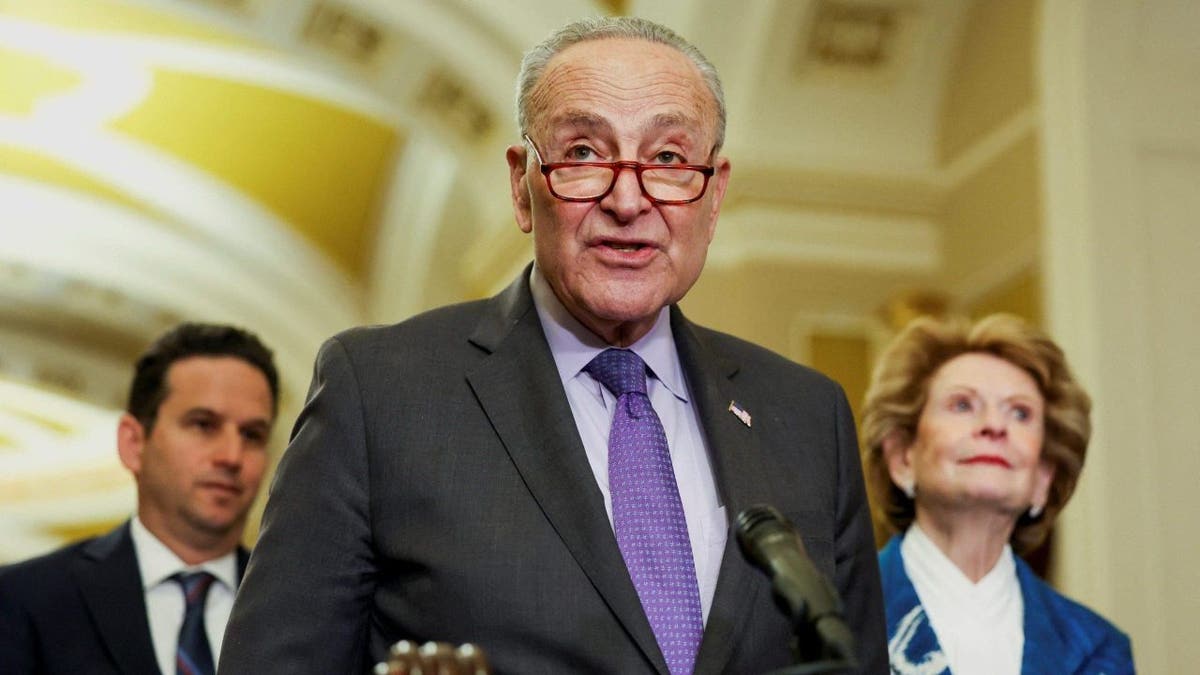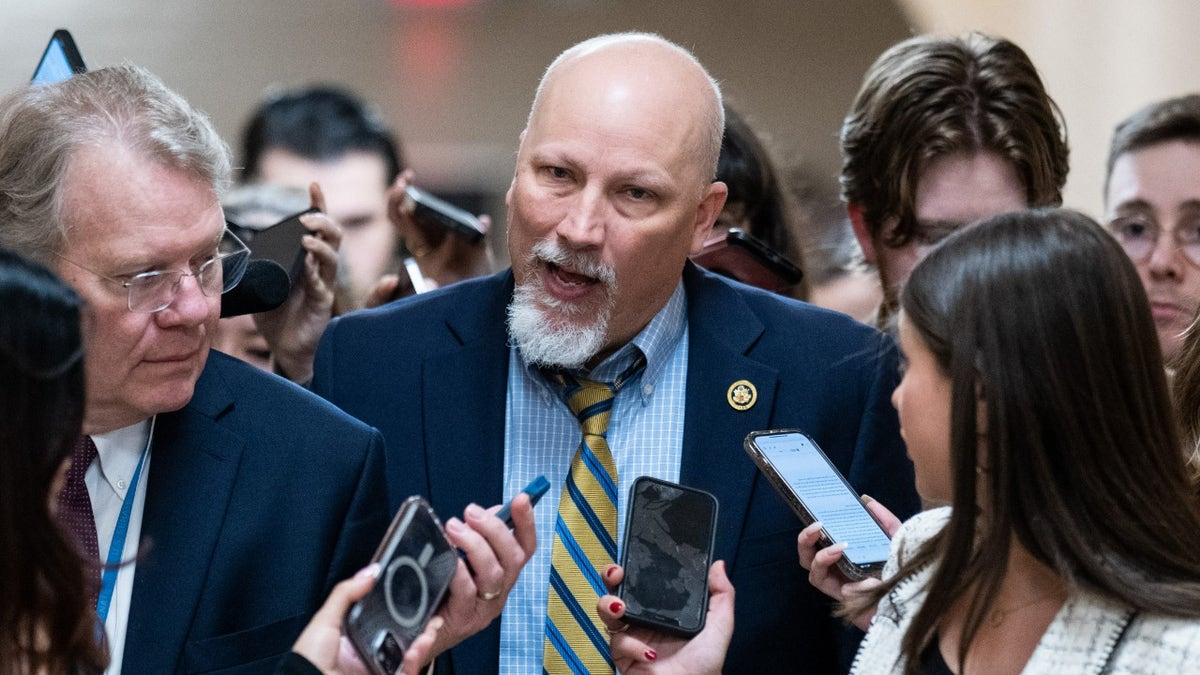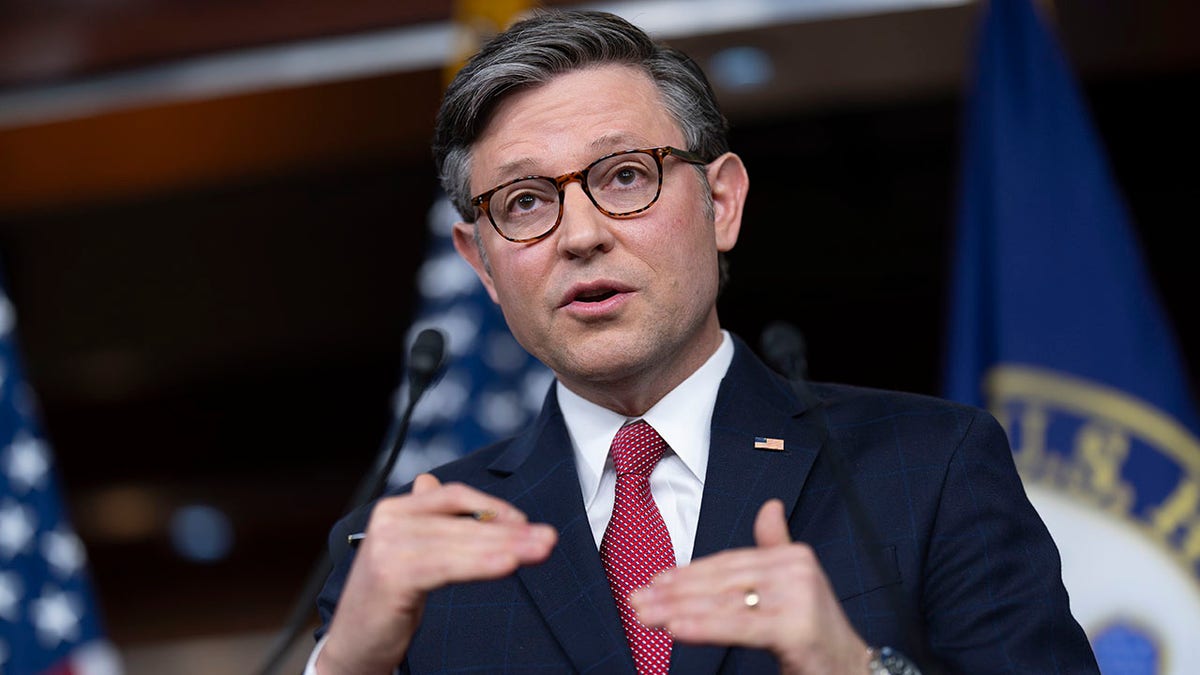While House and Senate conservatives railed against the $1.2 trillion federal funding bill that passed Friday, as the de facto leader of the Republican Party remained silent.
Former President Donald Trump, the GOP’s presumptive 2024 nominee, made no public comments, and his campaign did not respond to multiple requests for comment on the bill, which President Biden signed into law on Saturday.
“This agreement represents a compromise, which means neither side got everything it wanted,” Biden, a Democrat, said in a statement. “But it rejects extreme cuts from House Republicans and expands access to child care, invests in cancer research, funds mental health and substance use care, advances American leadership abroad, and provides resources to secure the border that my administration successfully fought to include. That’s good news for the American people.”
Congress avoided a lengthy partial government shutdown Saturday when the Senate passed the spending package 74-24 in the wee hours of the morning. The bill passed the House on Friday by a vote of 286-134, with a majority of Republicans, 113, voting against it.
US NATIONAL DEBT TRACKER FOR MARCH 22, 2024: SEE WHAT AMERICAN TAXPAYERS (YOU) OWE IN REAL TIME
Republican opponents seethed as the package moved through Congress, arguing that it did little to address the $34 trillion national debt, funded Biden’s policies that they oppose and failed to include border security enforcement measures that GOP lawmakers had demanded in order to fund the Department of Homeland Security.
The final vote violated the so-called Hastert Rule, a long held GOP “rule,” named after former House Speaker Dennis Hastert, that holds Republican leadership should allow votes only on bills that have a “majority of the majority” in agreement — in other words, only if a majority of Republicans support them.
That outcome reflected deep divisions within the House GOP conference, with many Republicans expressing frustration at leadership for unveiling the 1,012-page package just 48 hours before lawmakers were asked to vote.
“It’s total lack of backbone, total lack of leadership, and a total failure by Republican leadership. There’s no other way to describe it,” Rep. Chip Roy, R-Texas, said Thursday on former Trump White House adviser Stephen K. Bannon’s “War Room.” “This bill is an abomination.”
SENATE PASSES MAMMOTH $1.2T SPENDING PACKAGE AFTER BRIEF PARTIAL GOVERNMENT SHUTDOWN

Senate Republicans who opposed the package made similar complaints, with Sen. Mike Lee, R-Utah., telling Fox News Digital that it was an “utterly absurd, insulting and lawless suggestion that that is an appropriate legislative process.”
Sen. Josh Hawley, R-Mo., accused the bill’s supporters of “caving to Biden & Schumer & voting for billions in earmarks and special interest giveaways,” in a post on X.
GOP firebrand Rep. Marjorie Taylor Greene, R-Ga., went so far as to introduce a motion to remove House Speaker Mike Johnson, R-La., from leadership, accusing him of betrayal. Other Republicans, like Sen. Markwayne Mullin, R-Okla., said that removing Johnson would be a “mistake,” arguing that the speaker has done “the best he could” with a one-seat majority.
While Washington Republicans fight each other, Trump has not yet offered a clear vision for how he would manage these spending crises, were he to win back the White House in 2024.
HOUSE PASSES $1.2 TRILLION GOVERNMENT SPENDING BILL TO AVERT GOVERNMENT SHUTDOWN

On the campaign trail, the presumptive GOP nominee has insisted that he will pay off the national debt if he ousts Biden. But while Trump was president from 2017 through 2020, the laws and executive orders he signed added an estimated $8.4 trillion to the national debt, with interest, according to the Committee for a Responsible Federal Budget (CRFB).
Indeed, Trump was responsible for signing several trillion-dollar omnibus spending bills into law, even before the COVID-19 pandemic. Excluding COVID relief, Trump added $4.8 trillion to the debt over his four years in office, CRFB estimates.
In his first two years in office, when the House and Senate were in Republican hands, the Trump White House unsuccessfully sought to cut about $15 billion in federal spending with a recissions request. That effort narrowly passed the House and died in the Senate, where Sens. Susan Collins, R-Maine, and Richard Burr, R-N.C. sided with Democrats on a procedural vote to kill it.
In 2018, faced with a $1.3 trillion omnibus spending bill, Trump backed down from a veto threat and reluctantly signed the bill, reasoning that it provided needed funds for the military.
BIDEN SAYS $1.2T SPENDING PACKAGE IS ‘GOOD NEWS FOR THE AMERICAN PEOPLE,’ BUT CONGRESS’ WORK ISN’T OVER

“I say to Congress, I will never sign another bill like this again,” Trump said in remarks after he signed the bill.
The very next year, Trump signed a $1.4 trillion spending package to avert a partial government shutdown. He did so again as one of his last acts as president in December 2020, putting his signature on another massive $1.4 trillion omnibus that included $900 billion in COVID-19 aid.
But while Trump did not keep his promise to get federal spending under control in his first term, Biden is on track to exceed Trump’s debt accumulation by the end of this year. In his first three years as president, Biden has added $6.75 trillion to the national debt, according to Treasury Department data. In his final year, the Congressional Budget Office projects a deficit of $1.58 trillion — which would total $8.3 trillion by the end of Biden’s first term.
Those estimates were made before Biden signed the new $1.2 trillion appropriations package on Saturday.
Biden’s fiscal year 2025 budget calls for $3.3 trillion in net deficit reduction, although the revenue that is needed to achieve that goal would mostly come from tax increases. Biden has promised not to increase taxes on those making less than $400,000, but he otherwise has called for a repeal of Trump’s tax cuts and additional taxes on corporations and the wealthy.
Trump has campaigned on new rounds of tax cuts, arguing that economic growth stimulated by lower taxes will make up for any loss in government revenue. But he has yet to tell voters how he plans to cut spending, or how he will work with Congress to break the cycle of last-minute omnibus spending bills that were characteristic of his first term.
Read the full article here